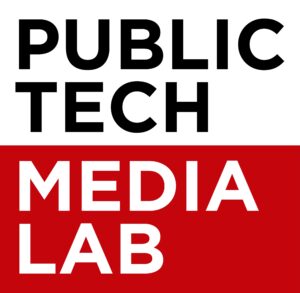Stepping into Tomás Dodds’ office is like stepping into his mind. His whiteboard is neatly divided into sections: Journalism 676, Public Tech Media Lab, UW Center for Journalism Ethics. His upcoming events, to do lists, due dates and meetings all written neatly serve as proof that Dodds joined the School of Journalism and Mass Communication (SJMC) and hit the ground running. Within his first few weeks at the University of Wisconsin-Madison, Dodds has revolutionized the state of journalism on and off campus.
 Dodds founded the Public Tech Media Lab to serve as a helping hand. The mission is to open doors for newsrooms to equip themselves with open-source investigation and artificial intelligence (AI) tools. Dodds had worked with other labs in the past, like the AI Media and Democracy Lab in the Netherlands and the Berkman Klein Center for Internet Society at Harvard, but felt there was something more to be done.
Dodds founded the Public Tech Media Lab to serve as a helping hand. The mission is to open doors for newsrooms to equip themselves with open-source investigation and artificial intelligence (AI) tools. Dodds had worked with other labs in the past, like the AI Media and Democracy Lab in the Netherlands and the Berkman Klein Center for Internet Society at Harvard, but felt there was something more to be done.
“I really felt that we were missing a space where both academics and journalists could come together and work towards the immense challenges we have today, which is artificial intelligence,” said Dodds.
With the functionality of AI improving daily, newsrooms and journalists alike are working to navigate the changes. Dodds explained that large newsrooms with sufficient resources to develop their own in-house tools are not the ones at risk. Rather, the smaller newsrooms using off-the-shelf, big tech platforms are the ones more likely to become dependent on AI technologies.
“It’s an infrastructural dependency,” said Dodds, “And so that’s precisely what we want to do with the lab, is help small newsrooms or local newsrooms in Wisconsin develop their own tools so they can avoid becoming dependent.”
Becoming hyper dependent on AI technologies is a slippery slope, and Dodds’ goal with the lab, and his teaching, is to show journalists and students that they can resists these technologies. Instead of using tools that are built with business in mind, the lab will focus on building tools with the journalist, and the public, in mind.
“We together can develop their own systems and tools that really align with their values, with their mission, with how they want to do journalism,” said Dodds.
But it’s not just about developing the tools. It’s about teaching and training the journalists to use them ethically. And that’s where the Public Tech Media Lab comes in again, conducting training sessions with local newsrooms to develop their own AI ethics guidelines. This process helps the newsroom remain innovative while preserving their values and ideals.
And the lab is starting right here in Madison with Isthmus Newspaper, helping them develop their ethical guardrails. Another recent partner to the lab is Factchequeado, a fact-checking organization dedicated to providing news stories to Latino and Hispanic communities across the United States. With two partnerships in place, the lab is on the road to helping newsrooms around Wisconsin, the country and, eventually, the world.

“I’m really not alone in this,” said Dodds, “I’m really joined by an amazing team of friends and colleagues, that have been working with me throughout the years. And the lab is the expression of all the work that we have been doing for many, many years with a lot of these colleagues.”
The future of technology in journalism is unfolding at UW-Madison, with the Wisconsin Idea at its center. To learn more about how to get involved with the Public Tech Media Lab, visit their website.